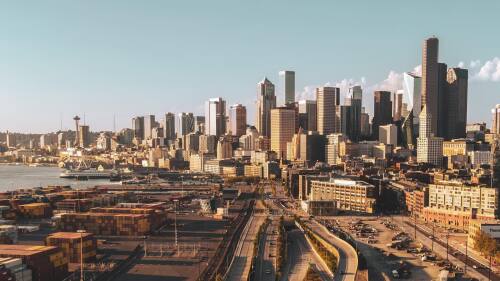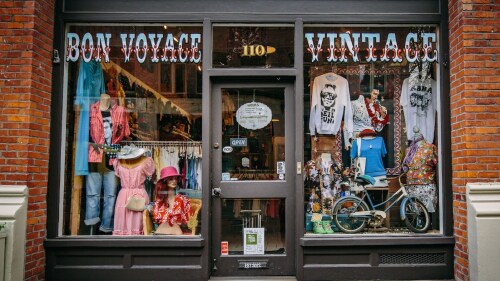Seattle’s Japantown, or Nihonmachi, is a microcosm of Japanese American history — from the first settlers in the late nineteenth century to modern preservation efforts today.
We have Seattle’s Japanese community to thank for the foundation of the Japanese American Citizens League in 1929, now a national entity + the oldest and largest Asian American and Pacific Islander civil rights organization.
The city’s economic stability cannot be fully understood without recognizing the pivotal role of early Japanese immigrants, who comprised Seattle’s biggest minority group by 1900 and supplied labor in booming industries + small businesses from the get-go.
Let’s get into it.
Early history
Between the late 1890s and 1910, Seattle’s Japanese population grew by 2500% — increasing from 200 to 5,000 residents — and largely found employment in canneries and the dominant railroad + logging industries.
During this period, several key Japanese institutions were erected that still hold significance today:
- Seattle Dojo — North America’s first and oldest judo dojo, established in the early 1900s.
- Nippon Kan Theatre — Built in 1909, this building housed shows by visiting actors and musicians, local competitions, and community meetings.
- Panama Hotel — Designed by Seattle’s first Japanese architect Saburo Ozasa and completed in 1910, the basement features Hashidate-yu Bathhouse (the last intact Japanese-style public bathhouse in North America).
By the 1920s, Japantown was a bustling community of businesses and institutions, relying almost exclusively on internal support for its short-lived success and vibrancy.

“Memory Walls” in Japantown depict the area’s past through preserved documents, photographs, and historical summaries.
Photo by SEAtoday staff, concept by Zocalo Studios
However, Anti-Asian land and citizenship laws, the Great Depression, World War II incarcerations, and growing discrimination rapidly unraveled the first generation’s hard-won commonwealth.
In the aftermath of Executive Order 9066, which forced people of Japanese ancestry out of their homes and storefronts and into internment camps, most families permanently lost access to belongings, households, and businesses left behind.
The power of preservation
In an effort to maintain + restore Japantown’s culture, several incentives launched:
- 1996 — Nonprofit organization Densho launched in Seattle, documenting + preserving oral histories from Japanese Americans incarcerated during World War II.
- 2009 — The Nisei Veteran’s Committee (NVC) Foundation conceptualized the Memorial Wall, honoring ~4,000 Japanese Americans who were detained or served in the military during WWII.
- 2013 — Historic Seattle and the National Trust for Historic Preservation began rehabilitation efforts to keep the Panama Hotel’s features and history in tact, while allowing its retail spaces to continue operation for future generations.
- 2022 — The Japantown Banner Project collaborated with neighborhood residents to install banners throughout the area in an artistic approach to commemorate history.
- 2023 — Friends of Japantown received a $50,000 grant for improvements in Nihonmachi Alley via redesigns of the space + community projects.
Next up in Nihonmachi
Japantown’s resilience and revitalization continues through neighborhood programs and community events.
There are several upcoming events:
- Saturday, April 13 — Celebrate Sakura Matsuri with live music, art installations, and vendors.
- Saturday, April 13 — Wing Luke Museum’s Japanese American Remembrance Trail tours walk you through the past and present Nihonmachi.
- Summer 2024 — The exact dates aren’t released yet, but Hai! Japantown will return in the summer for almost a month of fun with local businesses, food, galleries, and more.
Pro tip: If you miss the guided Remembrance tour, you can use an interactive map to take it on your own anytime.













